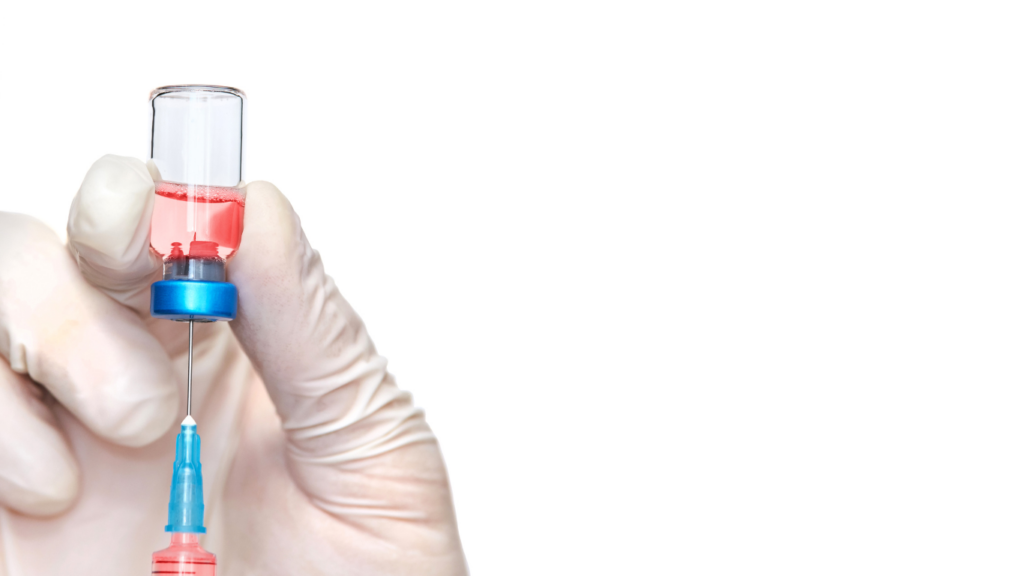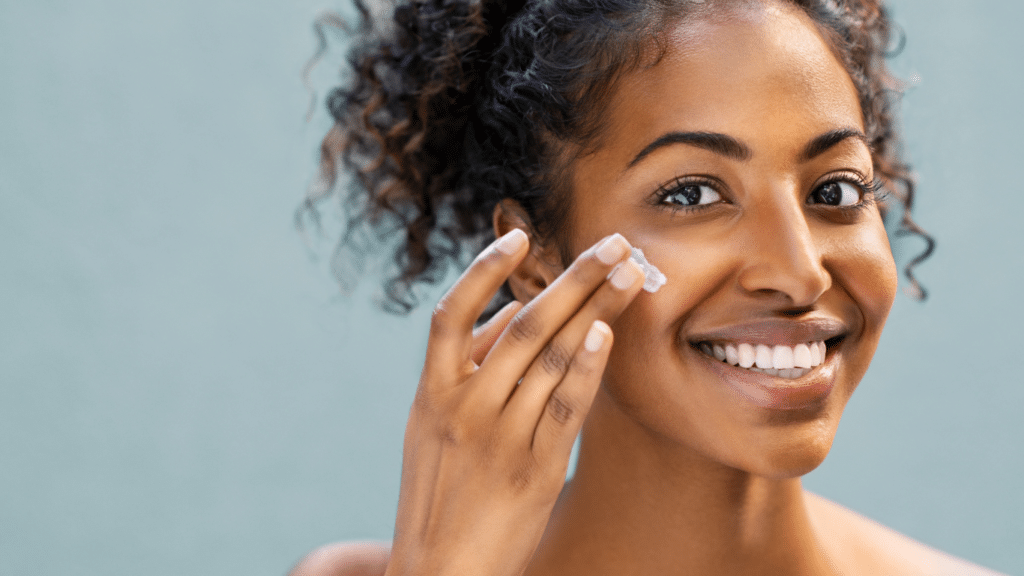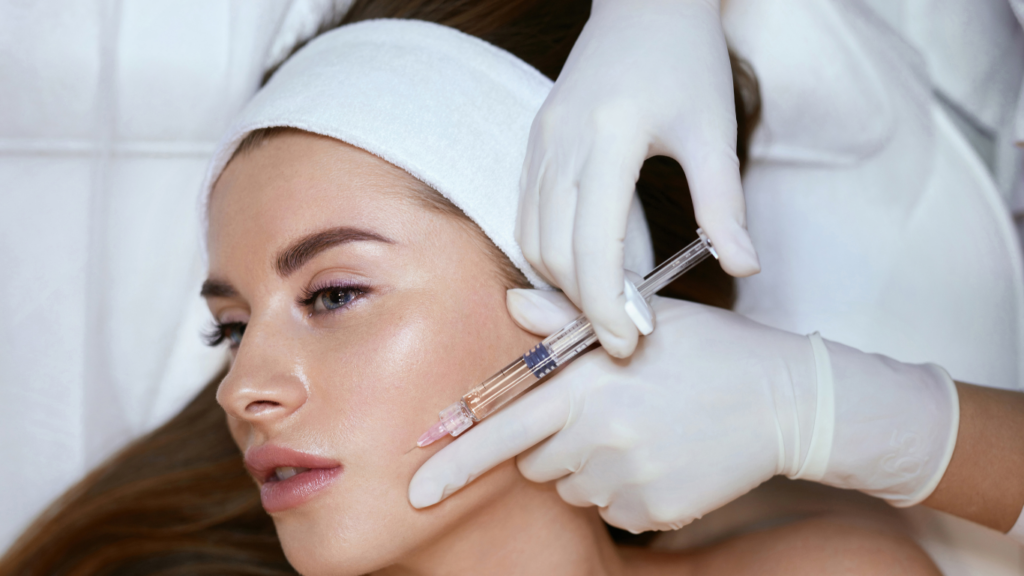Scrolling through TikTok lately, or maybe you’ve caught wind of a “salmon sperm facial” another way? Yep, that’s a polynucleotides treatment making waves as the next big thing for unbelievably smooth, lit-from-within skin. But here’s where things get murky. Suddenly, serums and creams are boasting polynucleotides on their ingredient lists, right alongside those buzzy in-clinic injections. So, are we talking about the same magic in a bottle versus a needle? And more importantly, which one actually delivers that coveted glow without emptying your wallet? Let’s decode the science behind topical versus injectable polynucleotides treatment and uncover which deserves a prime spot in your skincare ritual.
What Are Polynucleotides, Anyway?
For the uninitiated, polynucleotides are essentially tiny, purified pieces of DNA. And yes, the skincare world’s current darling often hails from salmon sperm (stay with us!). But fear not, beauty adventurers. Once meticulously processed, these microscopic DNA fragments transform into potent skin allies, celebrated for their ability to quench dryness, kickstart repair, and encourage collagen production.

Think of them as little cellular conductors, orchestrating your skin’s natural healing symphony. They work by nudging your skin’s innate regenerative powers, just like peptides. Think boosted hydration that banishes that tight, crepey feeling, a soothing calm for redness, and a gentle encouragement for skin cells to turn over and reveal a fresher canvas. It’s this impressive repertoire that’s propelled them into the spotlight of both cutting-edge medical aesthetic treatments and, increasingly, the serums and creams vying for a spot on your vanity.
Polynucleotide Injections: The Gold Standard?
When we talk about diving into the realm of injectable polynucleotides treatment, we’re not just dabbling in surface-level beauty. This is a more intensive, in-clinic experience where highly purified polynucleotides are artfully introduced directly into the dermis – that vital, deeper layer of your skin that acts as your skin’s command center. The dermis houses the hardworking cells responsible for churning out those coveted anti-aging proteins like collagen and elastin, the very scaffolding of youthful skin, and the melanin-producing cells, your skin’s built-in protectors for aging UV rays and free radicals.

Here’s what the scientific literature suggests a polynucleotides treatment can achieve when delivered via injection:
- Visibly refines skin texture, creating a smoother, more touchable canvas.
- Softens the appearance of those tell-tale fine lines and deeper wrinkles, lending a more youthful visage.
- Deeply replenishes your skin’s moisture reserves, resulting in a plump, dewy complexion and improved elasticity.
- Offers a soothing balm for facial redness and aids the skin’s recovery post-in office procedure, calming inflammation and promoting healing.
Peer-reviewed research consistently highlights the tangible benefits of an injectable polynucleotides treatment, demonstrating a visible reduction in wrinkle depth, a noticeable improvement in skin’s bounce, and a more even, radiant skin tone, particularly after a series of well-spaced sessions. In fact, the luminosity and newfound firmness can grace your complexion for up to six months post-treatment.

Skincare artisans, aka dermatologists, often artfully combine a polynucleotides treatment with other powerhouse treatments like hyaluronic acid fillers for added volume, radiofrequency for skin tightening, and lasers for resurfacing, creating a synergistic effect that amplifies results. If the allure of a polynucleotides treatment has caught your attention, seeking out a board-certified provider you trust is paramount, allowing them to assess your unique skin landscape and guide you on whether you’re an ideal candidate for this rejuvenating journey.
Topical Polynucleotides: The Siren Song of Simplicity?
Now, let’s turn our attention to the ever-growing brigade of creams, serums, and masks adorned with the promise of polynucleotides. These formulations beckon with the ease of at-home application, a gentler, more accessible entry point into the world of polynucelotides. But here’s the crucial caveat, our current scientific compass points predominantly towards the efficacy of injectable forms. The clinical trials that have illuminated the impressive benefits of polynucleotides have focused almost exclusively on their delivery via needle.

That’s not to say that these topical concoctions are entirely useless. They might indeed offer a welcome surge of surface-level hydration, quenching thirsty skin and imparting a temporary feeling of suppleness. However, the million-dollar question remains. Can these larger polynucleotide molecules effectively navigate the intricate labyrinth that is your skin barrier to reach the deeper, collagen-producing layers of the dermis?
Without robust scientific studies demonstrating this crucial penetration, we can’t equate topical polynucleotides’ potential benefits with their injectable counterparts’ well-documented regenerative prowess. In essence, while the allure of a topical polynucleotides treatment is undeniable, the scientific jury is still very much out on whether it can truly replicate the transformative effects of its injected sibling.
Science-Backed Results for a Polynucleotides Treatment: So Far, It’s All About the Needle
To offer a clear perspective, here’s a side-by-side glimpse at the current scientific landscape of an injected polynucleotides treatment versus topical polynucleotides.
| Feature | Polynucleotide Injections | Topical Polynucleotides |
| How It Gets In | Precisely injected into the dermis, the skin’s command center | Sits superficially on the skin’s protective barrier |
| What the Science Says | Robustly supported by multiple compelling human studies | Currently lacks any clinical trials demonstrating deep penetration and efficacy |
| What It Does | Visibly softens wrinkles, deeply hydrates, calms redness, boosts elasticity | Hydrates, but deeper effects remain unproven |
| How Long It Lasts | Up to 6 months | A couple of hours max |
| Best For | Those seeking significant anti-aging, post-laser rejuvenation, and relief from persistent redness | Individuals desiring gentle hydration |

Why Injection Reigns Supreme (For Now): Depth is the Destination
The crux lies in the art of delivery. It’s always all about how effectively these skin-loving molecules reach their intended destination. Your skin barrier, that remarkable guardian against the outside world, excels at its job. It diligently keeps unwanted intruders at bay. While this protective function is essential for overall skin health, it presents a formidable challenge when delivering potent active ingredients to the deeper layers where the real magic of regeneration happens.
This is precisely where the strategic precision of injections shines. By artfully bypassing the skin’s vigilant barrier, polynucleotides are delivered directly to the dermis, that bustling hub where collagen synthesis is ignited, tissue repair is orchestrated, and the skin’s vital hydration reserves are replenished.
Topical formulations, however, primarily reside on the skin’s surface or navigate only the uppermost layers of the epidermis. Without innovative delivery systems that can expertly shepherd these larger polynucleotides into the dermis, the transformative potential won’t measure up to the profound effects observed with targeted injections.
Which Polynucleotides Treatment Is Your Skincare Soulmate?

The optimal choice hinges entirely on your individual skincare aspirations, and you should work with a provider you trust to determine what’s best for you. But here are some general guidelines:
- Yearning for significant, long-term anti-aging results that go beyond the surface? → Science unequivocally points toward the transformative power of injections. Multiple studies showcase their ability to visibly diminish wrinkles, restore youthful elasticity, and deeply replenish hydration levels.
- Seeking a gentle, low-commitment addition to your routine? → Topical polynucleotide products might offer a whisper of hydration and antioxidant protection, but temper your expectations for dramatic, deep-seated changes. And consider the price point. There a ton of cheaper ways to hydrate your skin.
- Navigating persistent redness, post-procedure sensitivity, or the textural landscape of acne scars? → Injections emerge as a promising ally, working from within to soothe inflammation, encourage repair, and calm compromised skin, particularly when thoughtfully integrated with other regenerative therapies like radiofrequency or microneedling.
The Final Verdict: Injections Hold the Scientific Spotlight – Topicals Await Their Cue
For those seeking a polynucleotides treatment grounded in robust scientific evidence, the current narrative overwhelmingly favors the transformative potential of injections. Whether your concerns lie in the realm of etched fine lines, a lackluster skin texture, or persistent facial redness, the existing body of research underscores the tangible difference injectable PN can make – a difference that resonates with the delighted testimonials of countless patients.
Topical contenders? While they may offer a fleeting embrace of hydration, the compelling scientific data to champion them as a serious anti-aging force remains elusive.
References
Araco A, Araco F, Raichi M. Clinical efficacy and safety of polynucleotides highly purified technology (PN-HPT®) and cross-linked hyaluronic acid for moderate to severe nasolabial folds: A prospective, randomized, exploratory study. J Cosmet Dermatol. 2023 Jan;22(1):146-155. doi: 10.1111/jocd.15064. Epub 2022 May 26. PMID: 35531796; PMCID: PMC10084116.
Cavallini M, Bartoletti E, Maioli L, Massirone A, Pia Palmieri I, Papagni M, Priori M, Trocchi G; As Members of The Polynucleotides HPT™ Priming Board, Collegio Italiano delle Società Scientifiche di Medicina Estetica (Italian College of the Aesthetic Medicine Scientific Societies) – SIME, AGORÀ, SIES. Consensus report on the use of PN-HPT™ (polynucleotides highly purified technology) in aesthetic medicine. J Cosmet Dermatol. 2021 Mar;20(3):922-928. doi: 10.1111/jocd.13679. Epub 2020 Sep 21. PMID: 32799391; PMCID: PMC7984045.
Lampridou S, Bassett S, Cavallini M, Christopoulos G. The Effectiveness of Polynucleotides in Esthetic Medicine: A Systematic Review. J Cosmet Dermatol. 2024 Dec 8:e16721. doi: 10.1111/jocd.16721. Epub ahead of print. PMID: 39645667.
Lee D, Choi H, Yoo K, Park YJ, Park HJ, Oh SM, Ji GH, Rah GC, Shin DW. Assessment of current practices and perceived effectiveness of injectable polynucleotide for enlarged facial pores among cosmetic physicians: A survey-based evaluation. Skin Res Technol. 2024 Sep;30(9):e13738. doi: 10.1111/srt.13738. PMID: 39233467; PMCID: PMC11375025.
Lee DK, Oh M, Kim MJ, Oh SM. Clinical effects of polynucleotide with hyaluronic acid intradermal injections on facial erythema: Effective redness treatment using polynucleotides. Skin Res Technol. 2024 Sep;30(9):e70034. doi: 10.1111/srt.70034. PMID: 39258788; PMCID: PMC11388635.
Lee D, Kim MJ, Park HJ, Rah GC, Choi H, Anh ST, Ji GH, Kim MS, Kim G, Shin DW, Oh SM. Current practices and perceived effectiveness of polynucleotides for treatment of facial erythema by cosmetic physicians. Skin Res Technol. 2023 Sep;29(9):e13466. doi: 10.1111/srt.13466. PMID: 37753681; PMCID: PMC10485387.
Lee KWA, Chan KWL, Lee A, Lee CH, Wan J, Wong S, Yi KH. Polynucleotides in Aesthetic Medicine: A Review of Current Practices and Perceived Effectiveness. Int J Mol Sci. 2024 Jul 27;25(15):8224. doi: 10.3390/ijms25158224. PMID: 39125793; PMCID: PMC11311621.
Lim TS, Liew S, Tee XJ, Chong I, Lo FJ, Ho MJ, Ong K, Cavallini M. Polynucleotides HPT for Asian Skin Regeneration and Rejuvenation. Clin Cosmet Investig Dermatol. 2024 Feb 13;17:417-431. doi: 10.2147/CCID.S437942. PMID: 38371328; PMCID: PMC10874187.
Park KY, Seok J, Rho NK, Kim BJ, Kim MN. Long-chain polynucleotide filler for skin rejuvenation: efficacy and complications in five patients. Dermatol Ther. 2016 Jan-Feb;29(1):37-40. doi: 10.1111/dth.12299. Epub 2015 Nov 2. PMID: 26814448.
Rho NK, Han KH, Cho M, Kim HS. A survey on the cosmetic use of injectable polynucleotide: The pattern of practice among Korean Dermatologists. J Cosmet Dermatol. 2024 Apr;23(4):1243-1252. doi: 10.1111/jocd.16125. Epub 2023 Dec 13. PMID: 38093498.
